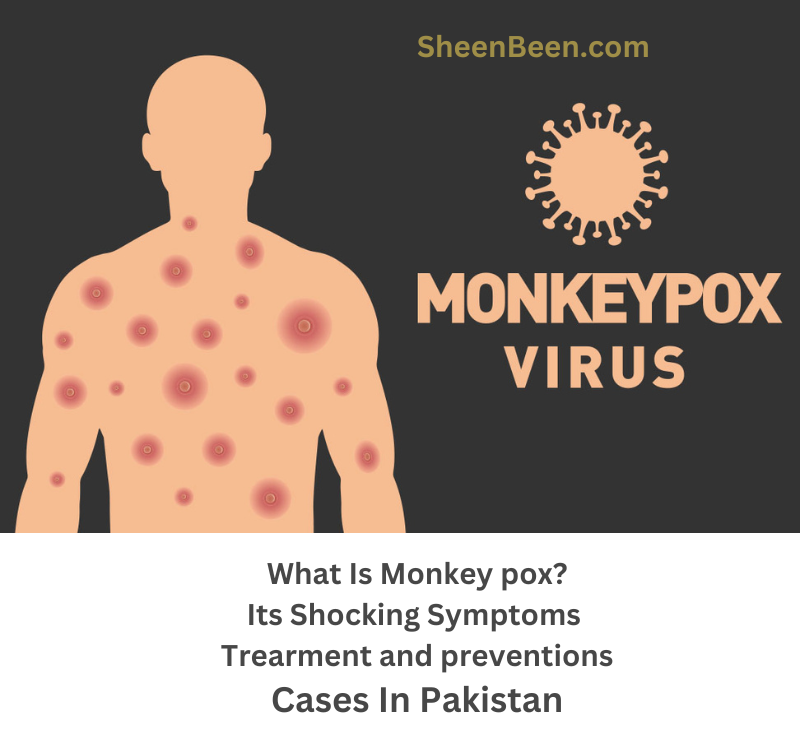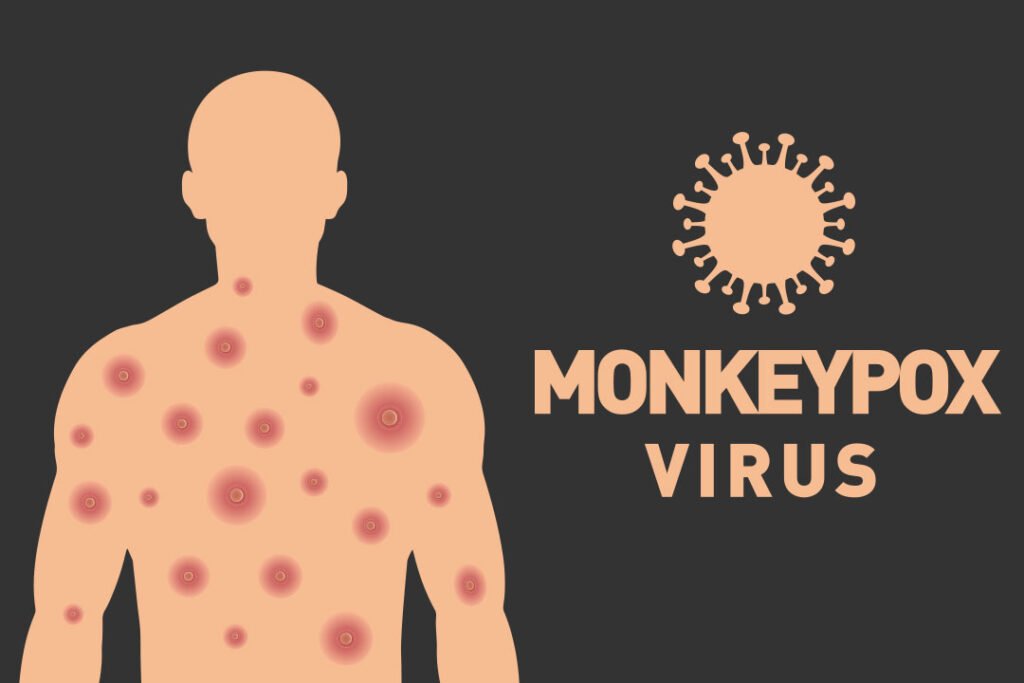Monkey Pox
Smallpox, formerly known as monkey pox, is a rare smallpox-like disease caused by a virus. It is found mainly in parts of Africa, but has also been observed in other parts of the world. It causes flu-like symptoms such as fever, chills, and rash that may resolve within a few weeks. There is no proven cure for MPOX, but it usually goes away on its own.
Key Facts
- Smallpox (monkeypox) is a viral disease caused by monkeypox virus, a species of the Orth poxvirus genus. It has two different branches: the first branch and the second branch.
- Common symptoms of MPOX are fever, headache, muscle pain, back pain, low energy, and swollen lymph nodes along with a rash or mucous sores that can last 2 to 4 weeks .Smallpox can be transmitted to humans through physical contact with an infected person, contaminated material or animals.
- Laboratory confirmation of Monkey pox disease is done by PCR testing of material taken from the affected skin area.
Table of Contents
Overview
Monkeypox (formerly known as monkeypox) is a rare disease caused by a virus. It causes itching and flu-like symptoms. Like the well-known smallpox virus, it belongs to the Orthopoxvirus genus.
Monkey pox virus is spread by close contact with an infected person. You can also be infected by an infected animal.
There are two known species (clades) of MPoxvirus: one that occurs in Central Africa (Clade I) and the other that occurs in West Africa (Clade II). The current global epidemic (2022 – 2023) is caused by clade IIb, a subtype of the less virulent West African clade.
How Common Is Monkeypox
Monkeypox is rare. However, the number of cases is increasing in Africa and in areas where these infections have not been seen before.
Signs And Symptoms
It may take several days to several weeks for symptoms to appear after infection. Symptoms of Monkeypox include:
- Fever
- Rash
- Chills
- Headache
- Muscle Ache
- Fatigue
- Back Pain
- Low Energy
- Swollen Lymph Nodes
The rash starts as flat, red bumps that can be painful. These tumors turn into pus-filled blisters. Over time, the blisters slough off and fall off. The entire process can take two to four weeks. There may be sores on the mouth, face, hands, feet, penis, vagina or anus.
Not all patients with MPOX develop all symptoms. Here are the different ways symptoms can manifest:
- Rash only (no other symptoms) or other symptoms that appear later.
- Flu-like symptoms followed by a rash. Some people don’t get a rash at all.
- The rash can be widespread, but some people only have a few bumps or blisters.
Typically, the first symptoms that occur with chickenpox are fever, muscle aches, and sore throat. The chickenpox rash begins on the face and spreads throughout the body, spreading to the palms and soles of the feet and developing in stages over 2-4 weeks – spots, papules, vesicles, pustules. Lesions return to the center before crusting. Then the scales fall. Lymphadenopathy (enlarged lymph nodes) is a classic symptom of smallpox. Some people can be infected without showing symptoms.
With the onset of a global smallpox pandemic (mainly caused by clade IIb viruses) in 2022, the disease begins differently in some people. In more than half of cases, the rash may appear before or at the same time as other symptoms and does not always spread throughout the body. The first lesion may be located in or near the vagina, anus, or mouth.
People with Monkey pox can become seriously ill. For example, the skin may become infected with bacteria, leading to abscesses or severe skin damage. Other complications include pneumonia and keratitis with loss of vision. Pain or difficulty swallowing, vomiting and diarrhea lead to severe dehydration or malnutrition. Sepsis (blood poisoning with widespread inflammatory response in the body), inflammation of the brain (encephalitis), heart (myocarditis), rectum (proctitis), reproductive organs (balanitis) or urinary tract (urethritis), or death
People with weakened immune systems due to medications or medical conditions are more likely to become seriously ill and die from MPOX. People with HIV who are not properly controlled and treated are more likely to develop serious illness.
You may have monkey pox and not know it. Even if you don’t have many symptoms of infection, you can spread the disease to others through prolonged close contact.
How Monkey Pox Spreads
Smallpox is spread by contact with an infected animal or person.
Person-to-person spread (transmission) occurs when you come into contact with the wounds, rashes, respiratory droplets, or oral secretions of an infected person, usually in intimate situations such as hugging, kissing, or sex. Research is ongoing, but experts are not sure whether the virus is transmitted through semen or vaginal secretions.
Transmission of the virus from animals to humans occurs through broken skin, such as a bite or scratch, or through direct contact with the blood, body fluids or smallpox sores (ulcers) of an infected animal.
You can also become infected with the MPOX virus through contact with recently contaminated materials, such as clothing, bedding, and other clothing used by a person or animal infected with the MPOX virus.
Monkey pox is treated with supportive care. Vaccines and treatments developed to treat smallpox and approved for use in some countries can be used to treat MPOX virus in some cases.
The 2022-2023 global Monkey Pox virus epidemic was caused by a strain known as Clade IIb.
Monkey pox disease can be prevented by avoiding physical contact with a person who has Monkey pox disease. Vaccination can help prevent people at high risk from becoming infected.
Diagnosis
Smallpox can be difficult to identify because other infections and conditions may look similar. It is important to distinguish between chickenpox, varicella, measles, bacterial skin infections, scabies, herpes, syphilis, other sexually transmitted diseases, and drug allergies. A person who has chickenpox may also have another sexually transmitted infection, such as herpes. Alternatively, the child may be suspected of having chickenpox. For these reasons, testing is crucial to treating people as quickly as possible and preventing further spread.
Detection of viral DNA using polymerase chain reaction (PCR) is the laboratory test of choice for smallpox detection. The best diagnostic specimens are obtained by direct scanning of remnants (skin, fluid or crust). If there are no skin lesions, the test may be performed on the throat, anus, or rectal swabs. Blood tests are not recommended. Antibody detection methods may not be useful because they do not distinguish between different Orth poxviruses.
Treatment and Vaccination
MPOX treatment aims to control itching, relieve pain and prevent complications. Early and supportive care is important to manage symptoms and prevent further problems.
The Monkey pox vaccine may help prevent infection. Vaccination should be given within 4 days of exposure to a person with smallpox (or within 14 days if there are no symptoms).
People at high risk are advised to get vaccinated against smallpox, especially during epidemics. This includes:
- Health care workers are at risk of infection.
- Men who have sex with men.
- People who have multiple sexual partners.
- Sex workers.
People with MONKEY POX should stay away from others.
Various antiviral drugs, such as tecovirimat, originally developed to treat smallpox, have been used to treat the MPOX virus, and other studies are ongoing.
Self care and Prevention
Most people who contract smallpox recover within 2 to 4 weeks. Here’s what to do to relieve symptoms and prevent infecting others:
Do
- If possible, stay at home and in your room
- Wash your hands often with soap or hand sanitizer, especially before or after touching the sores
- Wear a mask when around others and cover wounds until the rash heals.
- Keep your skin dry and clean (unless you are in the same room with someone else).
- Avoid touching items in common areas and disinfect common areas frequently.
- Use salt water to rinse mouth sores.
- For body sores, sit or take a warm bath with baking soda or Epsom salts.
- Take over-the-counter pain relievers, such as paracetamol (acetaminophen) or ibuprofen.
Disclaimer
The information provided on the blog or platform is intended to informational or educational purposes only and is not a substitute for professional medical advice, diagnosis or treatment. Always seek the advice of your medical physician or expert with any questions you may have with medical conditions. Never disregarded professional or medical advice or delay in seeking it because of something you have read on this blog or website.


